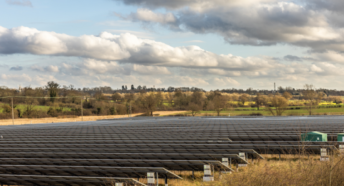The Green Belt: its value is obvious but should we be cherishing it a little more?

A report by a cross-party
Parliamentary group shows that London’s Metropolitan Green Belt, some of which
lies in Kent, not only protects against urban sprawl but also provides vital
countryside on our doorstep for health and well-being. Benefits include:
• 26,
267 hectares of Sites of Special Scientific Interest
• 5,400 hectares of local nature
reserves
• 44 per cent of London’s
Wildlife Trust sites
• 10,000 km of public rights of
way for use by walkers, cyclists and horse riders
• An area of which almost a
quarter (24%) is designated Area of Outstanding Natural Beauty
A new report by the All-Party
Parliamentary Group for London’s Green Belt shows that the London Metropolitan
Green Belt (LMGB) not only protects against urban sprawl, it’s also the
‘countryside on our doorstep’, containing much of the capital’s natural
reserves and wildlife, which is vital for Londoners and those in neighbouring
counties to spend time in for their health and well-being.
The findings by the group of MPs in their report A Positive Vision for London’s
Green Belt show that the LMGB is home to public rights of way used by walkers
and cyclists, Areas of Outstanding Natural Beauty, Wildlife Trust sites and
open farmland – all of which provide important long-term benefit for all those
living in and around the capital.
Findings highlight the value of ‘green-prescribing’ and the positive impact of
the Green Belt on people’s mental health, physical well-being, local food
production and the capital’s ability to address the climate emergency, such as
supporting the targets set out in the government’s 25 Year Environment Plan.
However, despite these benefits, research also shows that the purpose of
London’s Green Belt is under threat from new housing development. There are
advanced plans for some 100,000 houses – with more than double this number in
the planning pipeline – yet “little evidence that any of these homes will be
‘affordable homes’ for key workers, young people and young families”.
This is even though there is space for well over 280,000 homes on previously
developed brownfield land within Greater London alone.
The report recommends bold new measures to protect the Green Belt for those
living in and around the capital:
• An advisory council be set up
to conduct a comprehensive review of the LMGB and create a 25-year strategy for
its future, following the objectives set out in the government’s 25 Year
Environment Plan
• Funding be provided on the same
basis as that for National or Regional Parks to improve the landscape,
biodiversity, water retention and carbon sequestration abilities of the LMGB to
ensure it delivers multiple benefits for local communities
• Action be taken to ensure that
everyone in and around London, and further afield, feels able to access the
benefits of the countryside close at hand
• A review of the National Policy
Planning Framework to ensure that the Green Belt is better protected from
inappropriate development.
MP Crispin Blunt MP, co-chair of the All-Party Parliamentary Group (APPG) for
London’s Green Belt, said: “The APPG for London’s Green Belt was set up in
response to the rapidly increasing pressure for development on Green Belt land
that has escalated over the last few years and is now reaching a crisis point.
“As a society, we have to decide whether or not we value the Green Belt
sufficiently to prevent its erosion and subsequent disappearance in the coming
decades. We have chosen to focus on the positive benefits of London’s Green
Belt as we want these to complement its importance as the central defence
against urban sprawl. Once Green Belt has been developed, it is impossible to
get it back again.”
Tom Fyans, CPRE deputy chief executive, said: “Green Belts provide a huge
opportunity to help us in our efforts to address the climate emergency and
wildlife crisis while supporting the improved health and well-being of people
living and working in and around London, which is continually being ignored.
“Now is the time to take new and bold action to keep this valuable green
resource for future generations.”
He was supported by Richard Knox-Johnston, chair of the London Green Belt
Council and vice-president of Kent CPRE: “Accessible open countryside adjoining
urban London has a vital role to play in assisting in the climate emergency,
improving health and well-being, giving opportunities for recreation and
providing fresh and nutritious food close to the city centre.
“At present, there is no overall organisation with responsibility for the use
of land in London’s Green Belt that would be able to create a long-term
strategy for its beneficial use and protection.
“We need a clear vision and strategy for London’s Green Belt to ensure it can
provide its important resource for those living and working in and around
London.”
Monday, December
16, 2019
- A number of important documents have yet to emerge. For example, a rigorous transport plan and a finalised air-quality assessment. The latter is critical given that allocations at Teynham will feed extra traffic into AQMAs.
- There seems to be no coherent plan for infrastructure delivery – a key component of the plan given the allocations being proposed near the already crowded Junction 7.
- There seems to have been little or no cooperation with neighbouring boroughs or even parish councils within Swale itself.
The removal of a second consultation might have been understandable if this final version of the plan were similar to that being talked about at the beginning of the consultation process. It is, however, radically different in the following ways:
- There has been a major shift in the balance of housing allocations, away from the west of the borough over to the east, especially around the historic town of Faversham. This is a move that raises many concerns.
- A new large allocation, with accompanying A2 bypass, has appeared around Teynham and Lynsted, to which we are objecting.
- Housing allocations in the AONB around Neames Forstal that were judged “unsuitable” by the council’s own officers have now appeared as part of the housing numbers.
- Most of the housing allocations being proposed are on greenfield sites, many of them on Grade 1 agricultural land – a point to which we are strongly objecting.
Concerns about the rush to submit the plan
The haste with which the plan is being prepared is especially worrying given the concentration of housing in Faversham. If the town is to take a large amount of new housing, it is imperative that the policies concerning the area are carefully worked out to preserve, as far as possible, the unique nature of the town. The rush to submit the plan is likely to prove detrimental.
As Swale does not have a five-year land housing supply, it is open to speculative development proposals, many of which would run counter to the ideas contained in the current plan. Some are already appearing. This is a common situation, and one that, doubtless, is a reason behind Swale’s haste.
Our overriding fear, however, is that this emphasis on haste is ultimately going to prove counterproductive. This is because it is our view that the plan, in its current form, is unlikely to pass independent examination. We are urging Swale to listen to and act upon the comments being made about the plan and to return the plan to the council with appropriate modifications before submitting it to the Secretary of State.
Essentially, this means treating the current consultation not as the final one but as the ‘lost’ second consultation.
The consultation ends on Friday 30 April and we strongly urge residents to make their opinions known if they have not already done so.
Further information








